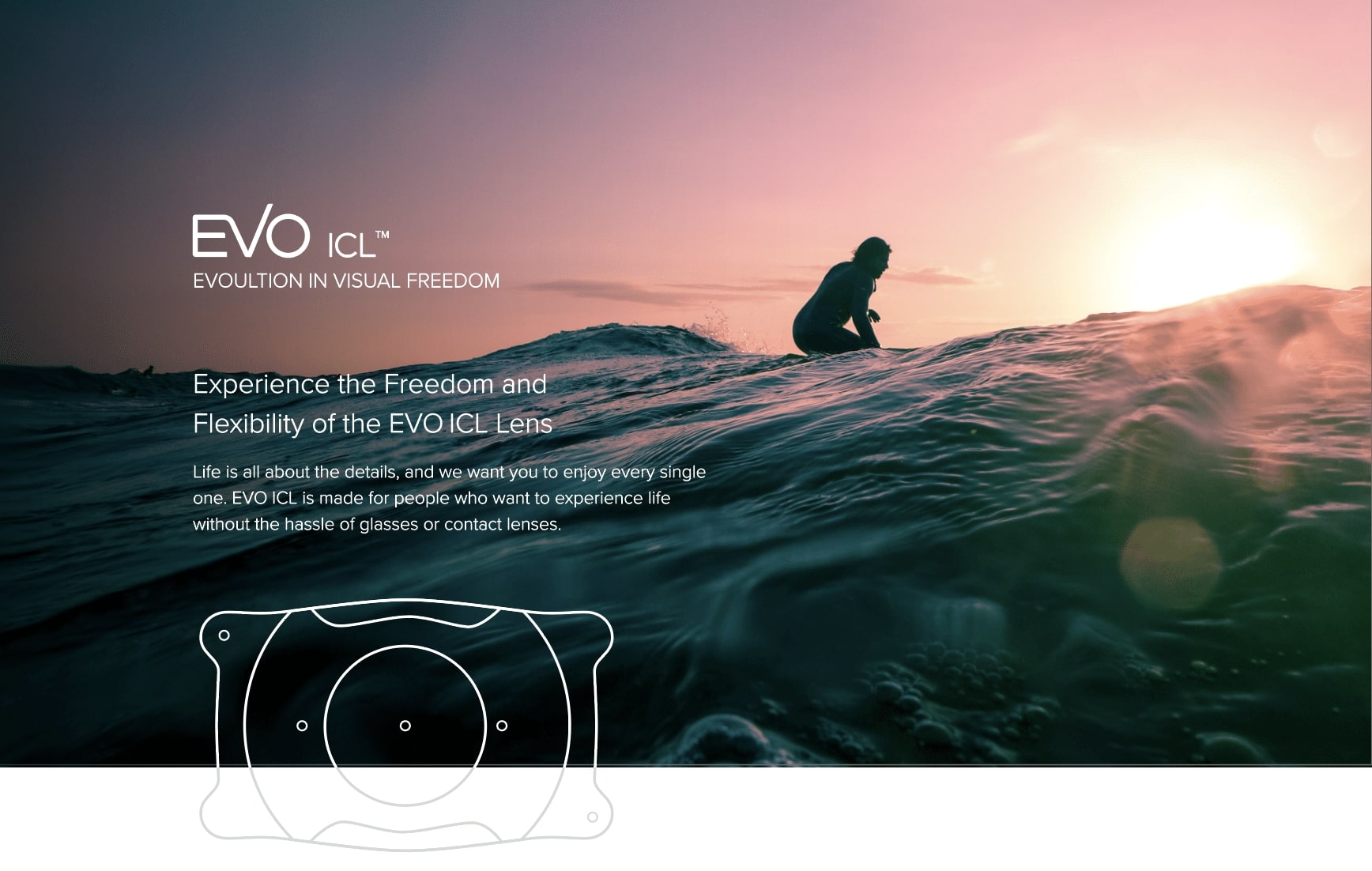
Enjoy visual freedom with the EVO ICL.
For some patients, LASIK isn't the right fit which is why we are introducing the EVO ICL. This is generally the case when the patient has corneas that are too thin or refractive errors that are too large for LASIK or PRK to correct. You can still experience Freedom from glasses and contacts. Dr. Richens is excited to debut this groundbreaking new lens to Southern Utah & Northern Nevada!
What is the EVO ICL?
The EVO ICL is an advanced Implantable Collamer Lens used to correct vision issues like myopia (nearsightedness) with or without astigmatism. With this groundbreaking technology, there is no removal of corneal tissues. Instead, the lens is implanted behind the iris and in front of the eye's natural lens. Working in harmony to reduce or eliminate the need for glasses and contacts, and an added peace of mind it is removable by your doctor.
Patients who receive EVO ICL are able to enjoy natural vision correction with minimal risks associated with other popular treatments (LASIK and PRK). The best way to describe the treatment is like attaching a lens to a camera — the ICL corrects and enhances your vision without altering the structure of the eye.
The ICL is a removable lens implant, meaning your doctor can take it out if you decide that you would like to return to glasses or contacts. If you have been searching for an alternative to LASIK, then reach out to us to discuss the revolutionary EVO ICL procedure.
The Procedure - What to Expect
- Dr. Richens will make a small opening in your cornea through which the EVO will be inserted and positioned.
- The insertion is a virtually painless procedure for most patients with numbing drops administered and typically takes less than 20 - 30 minutes.
- You will typically have immediate improved vision with a quick recovery time.
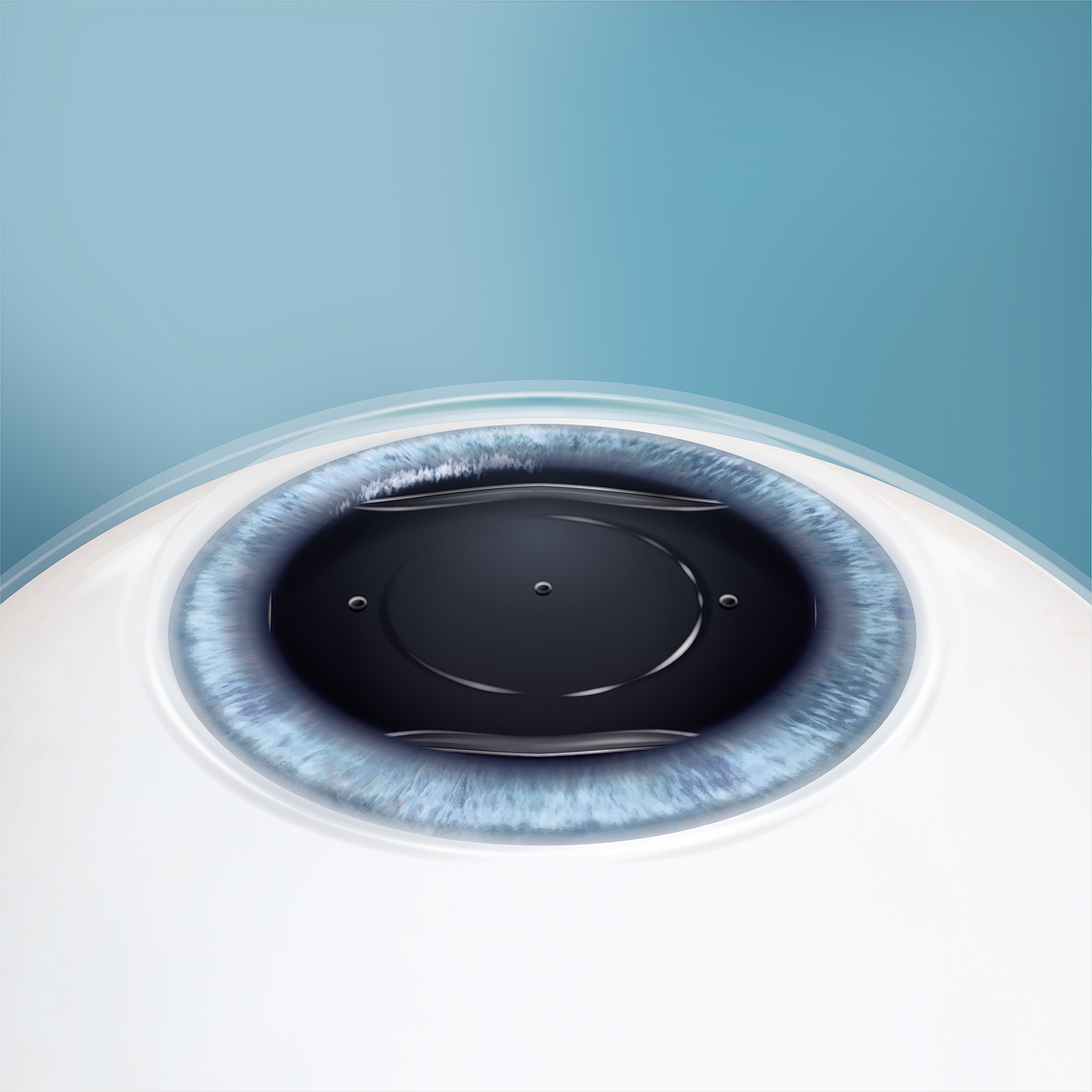
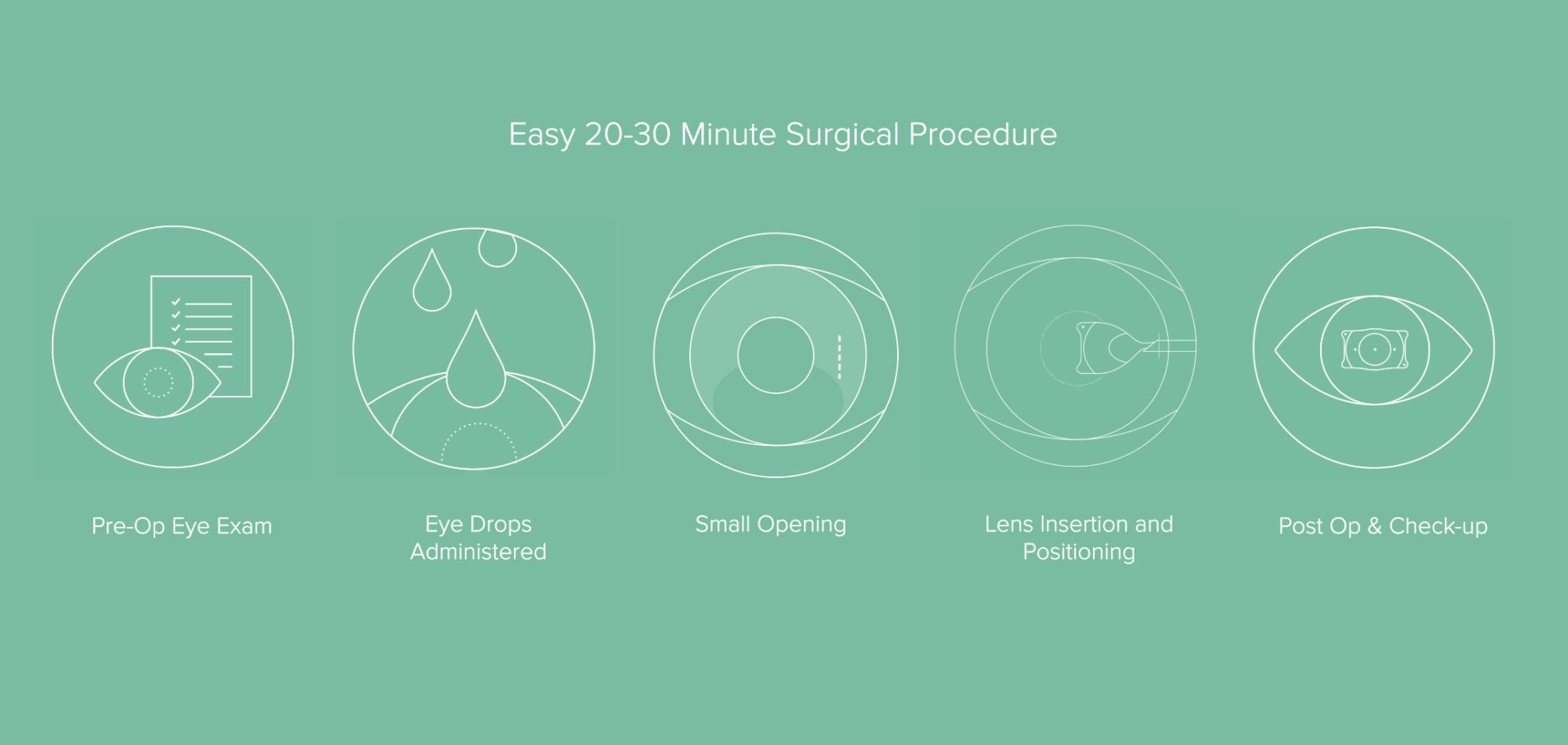
What to Expect for your EVO ICL procedure
EVO ICL vs LASIK & PRK
All three vision correction surgeries can effectively reduce dependency on glasses or contact lenses, though there are distinct differences that make some more suitable for certain patients.
LASIK (Laser-Assisted In Situ Keratomileusis)
With an average success rate of 95%, LASIK is the leading treatment for patients with myopia and myopic astigmatism. It works by altering the shape of the cornea — the part of the eye that affects 65% to 75% of light that passes through the eye. Changing the position of the cornea through laser-assisted treatment allows your ophthalmologist to correct refractive errors and restore your vision.
LASIK is performed by making a flap in the cornea. After making the incision, your eye surgeon lifts it and temporarily moves it to access the underlying tissue; they then apply the corrective laser to the deepest part of your cornea to reshape it. Then, they close the flap and ensure it is completely smooth. Despite being an open incision, you do not require any sutures. The corneal flap will naturally adhere and close on its own.
LASIK is extremely safe and effective, but it is not suitable for some patients, including those with:
- Unstable refractive vision errors
- Cone-shaped corneas (keratoconus)
- Thin or diseases corneas
- Thin corneas
- Severe dry eye
- Advanced stages of glaucoma
- Cataracts
- Extreme prescriptions for myopia, astigmatism, or hyperopia
- Difficulty managing their diabetes
Our team will discuss your candidacy for LASIK during a consultation. If you are not a suitable candidate, we can explore EVO ICL as an alternative.
PRK (Photorefractive Keratectomy)
While LASIK involves creating a flap in the cornea to alter vision, PRK uses an excimer laser that shapes the underlying tissue. Excimer lasers use ultraviolet light to alter the eye’s refractive ability by eliminating tissue on the anterior cornea, a process known as photoablative decomposition. This can help correct errors that lead to myopia or astigmatism.
PRK poses fewer risks than LASIK due to the lack of cornea incision. This can help prevent postoperative dry eye and infection. Another advantage of PRK is that it eliminates one of LASIK’s greatest downsides — flap complications. In the event that the flap does not close properly, it could become irritated or cause microscopic debris to get caught beneath it. This could lead to further visual distortions and image-forming defects called optical aberrations.
EVO ICL (Implantable Collamer Lens)
The EVO ICL procedure does not reshape the cornea. Instead, a foldable lens is implanted behind the iris in front of the eye’s natural lens. The artificial lens works by reflecting light to the retina, improving vision and restoring clarity. Patients with dry eyes, high vision prescriptions, or thin corneas may benefit more from EVO ICL than LASIK or PRK.
As no corneal tissue is removed during the EVO ICL procedure, patients enjoy experiencing faster recovery periods and a reduced risk of postoperative complications. This lens implant treatment also has excellent day and night visibility, so you can enjoy your life with greater visual freedom and no worries about changing glasses or contact lenses.
What to Expect for your EVO ICL procedure
Benefits of EVO ICL
- Provides clear, sharp vision
- 20 to 30 minute procedure
- Quick recovery time
- Removable by your doctor
- Offers UV protection
- Not visible once in place
- Can treat nearsightedness with or without astigmatism
- For patients who are not candidates for LASIK due to their corneas
- Does not cause dry eye syndrome
- Excellent night vision
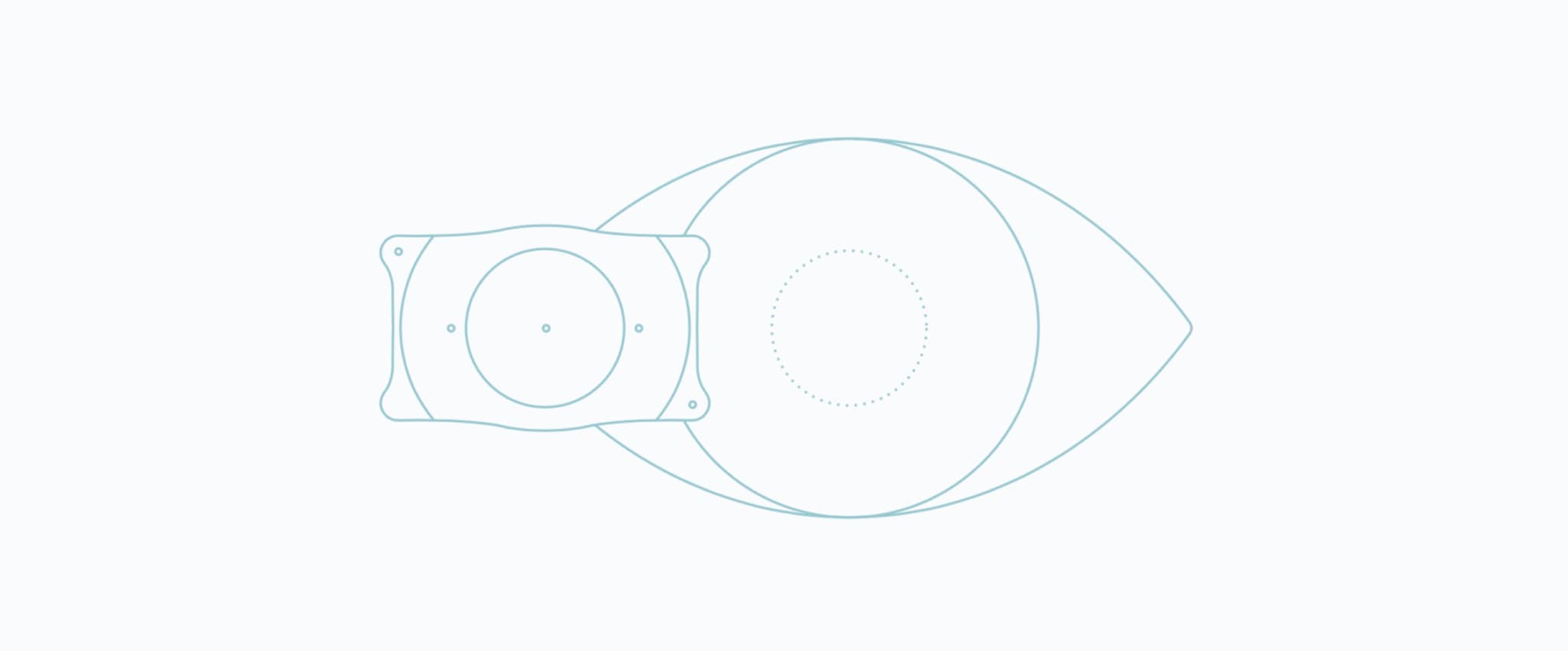
Is EVO ICL Right For Me?
Patients between the ages of 21 and 45 who are nearsighted and have had a stable prescription for at least one year are good candidates for this procedure. In addition to saving money on prescriptions and lenses, EVO ICL can give you greater freedom and flexibility to enjoy your favorite activities with sharp vision.
Is EVO ICL, LASIK, or PRK Best for My Vision?
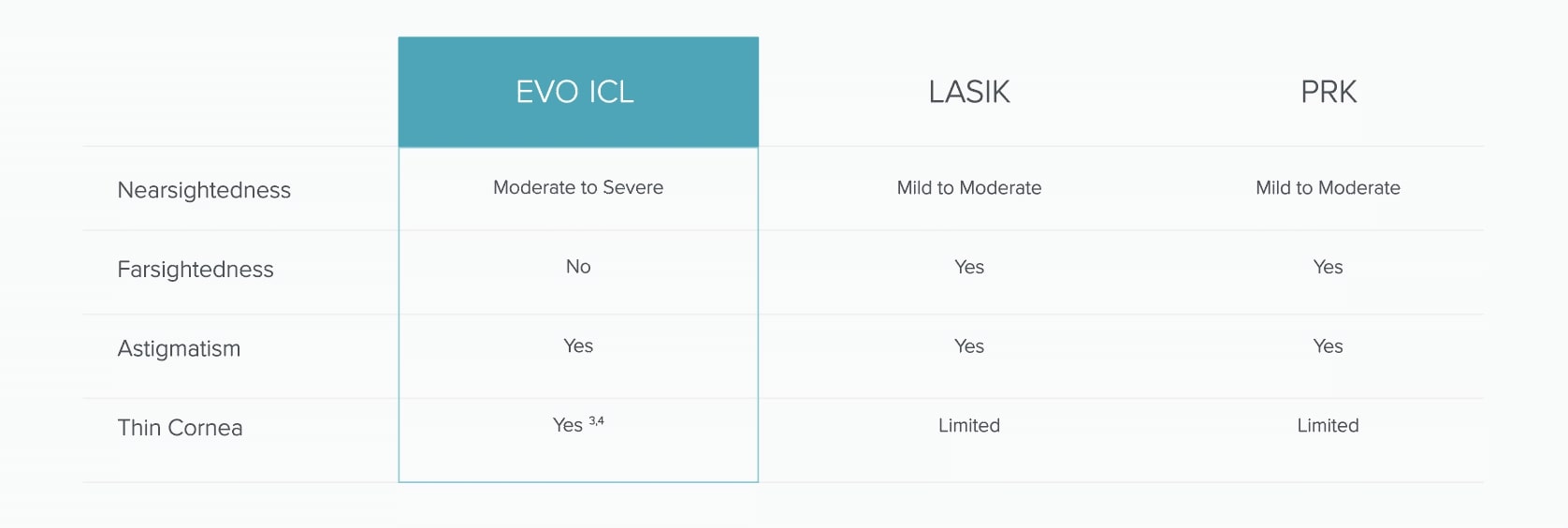
What is the expected recovery time?
Recovery from EVO ICL is about one day. Patients experience minimal discomfort, and most can return to work and resume normal daily activities within 24 hours.
You will likely notice continued improvement in your vision over the following week. While you can go back to your usual activities after treatment, you are advised to avoid screens to prevent eye strain. You will also be advised to avoid hot tubs, swimming pools, and having tap water enter the eyes for several weeks following your procedure.
We will provide you with comprehensive aftercare instructions to make sure you are completely comfortable caring for your eyes after your lens implant treatment.
Why Choose Richens Eye Center for EVO ICL?
Richens Eye Center is a trusted provider of advanced vision care in Southern Utah, with a team of board-certified ophthalmologists and optometrists. Dr. Sharon Richens, one of our leading surgeons, has specialized expertise in cataracts, corneal conditions, and glaucoma.
Our reputation is built on surgical precision, patient trust, and clinical leadership. We provide a full range of ophthalmic services, including EVO ICL implantation for patients who may not be candidates for LASIK or PRK. Your eyesight matters to us, and we’re here to help you protect and improve it with real care.
Will I Be Able to Feel the Lens in My Eye After It’s Implanted?
Once the EVO ICL is implanted, you won’t be able to feel it in your eye at all. The lens is placed behind the iris, where it stays stable and out of sight, so there's no sensation or awareness of it being there during daily activities.
Can the EVO ICL Be Removed or Replaced Later?
Yes, one of the advantages of the EVO ICL is that it’s completely removable. If your prescription changes significantly or if another procedure becomes a better option in the future, your surgeon can safely take out or replace the lens.
What Are the Risks or Side Effects of EVO ICL?
As with any eye surgery, there are some potential risks, including infection, increased eye pressure, or inflammation, but these issues are uncommon and often treatable. Some people may also notice halos or glare at night, especially in the early healing period.
Can EVO ICL Correct Both Nearsightedness and Astigmatism?
Yes, the EVO ICL is available in versions that treat both nearsightedness and astigmatism, making it a versatile solution for people with multiple refractive errors. It can help reduce or eliminate the need for glasses or contact lenses in many cases.
Does Insurance Cover EVO ICL?
EVO ICL is typically not covered by insurance because it is considered an elective vision correction procedure. Most insurance plans classify it as non-essential, similar to LASIK or PRK.
However, you can use funds from a Health Savings Account (HSA) or Flexible Spending Account (FSA) to help offset the cost.
Do You Offer Financing Options?
Richens Eye Center accepts CareCredit financing for patients who prefer to spread out the cost of treatment. CareCredit offers no-interest plans (6, 12, 18, or 24 months) if paid in full during the promotional period, and extended plans (24 to 60 months) with fixed interest rates.
There are no upfront costs or prepayment penalties, and you can use it for future treatments without reapplying. You can apply online and receive a quick decision.
Schedule a Consultation
To schedule a consultation or to learn more information about EVO ICL, contact us today at any of our three locations. We proudly serve St. George, UT, Mesquite, NV, and the surrounding areas.


